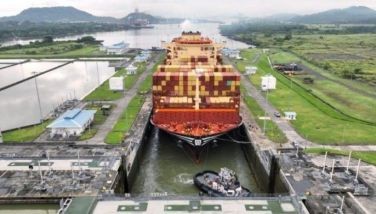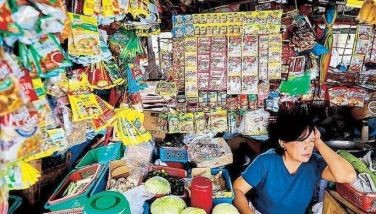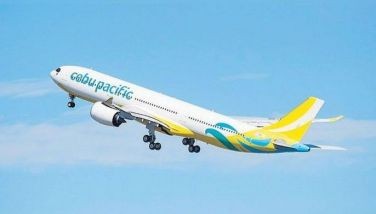Preserving a precious resource

Not many readers have probably heard of the Coral Triangle Initiative, and of how profoundly it impacts our daily lives. Climate change, the melting of the North Pole, and the Copenhagen Summit may have grabbed the headlines, but here in our own backyard is one of the greatest challenges to the environment.
It all starts with the lowly coral which in large numbers become coral reefs. Coral reefs are like oasis in the desert. They provide food and shelter and spawning grounds to a host of marine life including commercially valuable fish and crustaceans.
The Coral Triangle is a six-million square-kilometer region of coastlines and oceans bounded by the Philippines, Indonesia, Malaysia, Papua New Guinea, Solomon Islands and Timor-Leste. Although it covers just one percent of the earth’s surface, the Coral Triangle comprises 30 percent of the world’s coral reefs, which include 75 percent of all coral species known to science. In the region are more than 3,000 species of reef fish and commercially-valuable species including groupers, yellow fin tuna, skipjack tuna, and big eye tuna. Six of seven species of marine turtles can be found there. It is considered the epicenter of marine diversity in the world.
One of the most important reefs of the Coral Triangle is no more than a two-hour drive from Manila – the Verde Island Passage bounded by Batangas and regarded as the marine equivalent of the Amazon River basin. A study by the Smithsonian Institution calls the reefs “the center of the center” of marine biodiversity. Damage to the Verde Island coral reef system will lead to the collapse of marine resources in the Sulu-Sulawesi Marine Eco-Region, an area of some 950,000 sq km, surrounded by Indonesia, Malaysia and the Philippines.
The proximity of Verde Island to centers of population highlights the problem – the Coral Triangle is home also to more than 150 million people, one third of whom depend on marine and coastal resources for their livelihood. This vital marine environment is under serious threat from overfishing and destructive fishing, environmental degradation principally through pollution, climate change, and poverty. The interaction between marine biodiversity and human need makes for a compelling case for sustainable investment and business.
The Coral Triangle Initiative
The Coral Triangle Initiative (CTI) was launched in 2007 during the APEC Summit and is aimed at creating a regional network for collaborating in preserving the region’s unique marine and biological resources. Its members are the six countries in the triangle. Because of the Coral Triangle’s economic importance, the focus of the initiative is to develop a regional network that would encourage the sound management of the resources through collaboration by government, the local communities and the business sector. It was for this reason that the CTI in cooperation with the World Wide Fund Coral Triangle Program organized a business summit in Manila on Jan. 19.
Attending the first-ever business summit were leaders from the communications, seafood, travel, finance and oil-and-gas industries. The hope was that participants will learn the best practices and commit to “go green.” One specific target is to bring together buyers and producers in the fisheries sector and encourage them to promote sustainable fisheries in partnership with coastal communities.
Going green – an improved bottom line
The ADB and the FAO listed five major drivers for sustainable fishing methods, 1) globalization of the market for seafood; 2) growing number of affluent environmentally conscious consumers; 3) increased transparency of information; 4) a growing demand for corporate social responsibility; and 5) alignment with global business process and standards. These “drivers” are anchored on the growing requirements by regulators and smarter consumers for environmentally responsible business practices in the harvesting and processing of the product in exchange for market access and higher prices.
The Philippines has been at the forefront of sustainable fishery – not surprising since we are also one of the worst offenders. Developing “mariculture” – raising food fishes in sea cages instead of catching them in the wild and depleting their stocks and destroying their habitat in the process – is one approach that we have taken. Groupers, sea bass, snappers, pompano, salmon and tuna can now be raised through this method. Although not without its disadvantages, advances in mariculture technology have made operating costs competitive and lessened the environmental impact. According to Agriculture Secretary Arthur Yap, when President Arroyo took office in 2001, there were no mariculture parks in the Philippines. Today, there are 48 parks spread across the country. Fish production has increased from three million metric tons in 2001 to five million metric tons by the last quarter of 2009, despite the devastating typhoons that destroyed infrastructure put up for the purpose.
As for the Verde Island Passage, it has been designated as one of 500 Marine Protection Areas in the country. The protection plan for the area is being implemented by five provincial governments and includes law enforcement, establishment of sanctuaries, extension, information dissemination and capacity building in coastal resource management. Training and inculcating the value of sustainable fishery is key to getting the vast majority of fishermen to protect these valuable assets.
Incentives and regulation are needed, however, to encourage commercial fishing operations to develop sustainable and better fishing practices, like the use of circle hooks in tuna fishing. The hooks dramatically decrease the accidental catching of sea turtles. President Arroyo announced in her speech at the summit the launching of an extension program for the widespread adoption of circle hooks in tuna fishing throughout the country. Now I wonder if our politicians will find malicious political motives in this endeavor.
The problem faced by the Coral Triangle is immediate, and its impact is global. Consumers can make a difference by expressing preference for goods and services produced by green businesses. But it remains a question whether Philippine business will respond to this trend. This is where government should step in with an educational campaign, clear-cut regulations, and incentives. We not only have an opportunity to ensure the sustainability of our marine resources, but if we tell our story well, we can turn our fishery products into an international premium brand.
President Arroyo’s legacy will be debated for years to come, but one thing is clear. She has worked hard to preserve our part of the Coral Triangle and the effort is making a positive difference. The next Administration and the private sector must maintain this momentum and not squander our opportunity to preserve these precious resources.
- Latest
- Trending





























